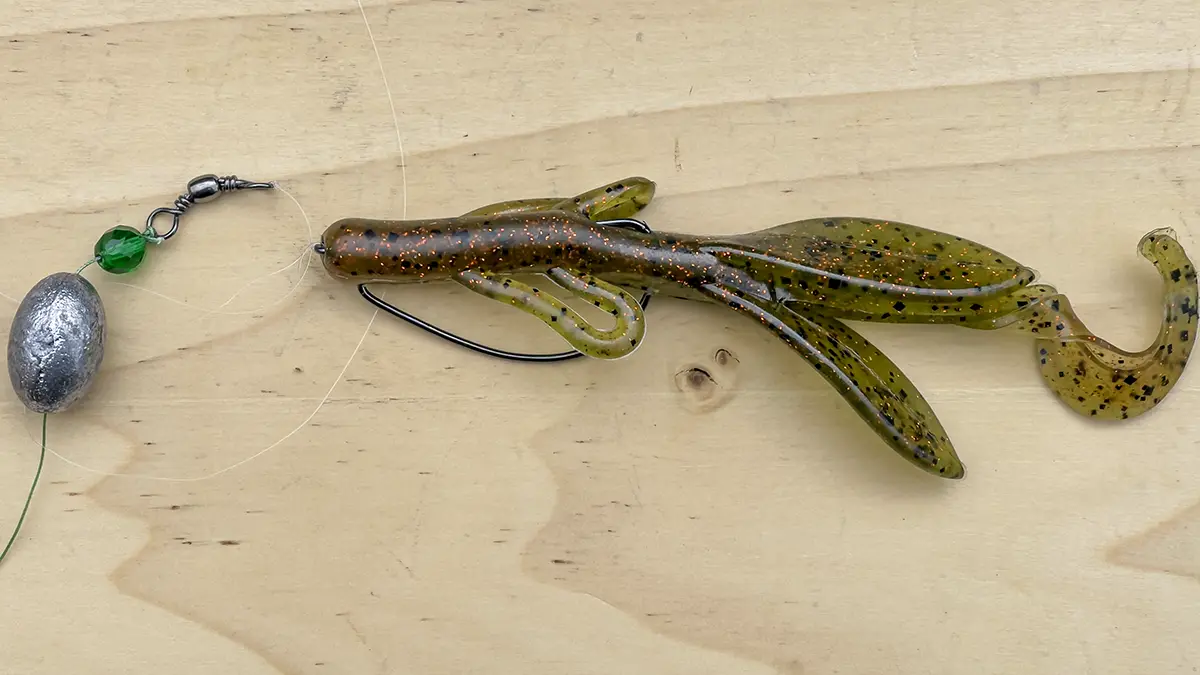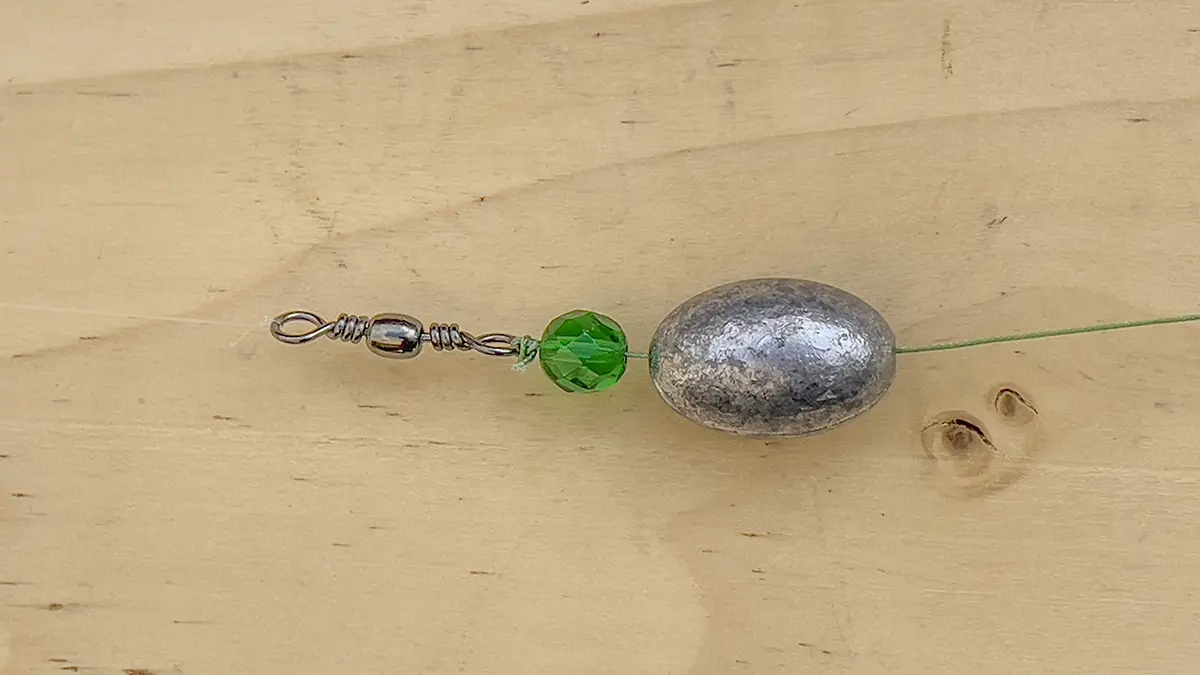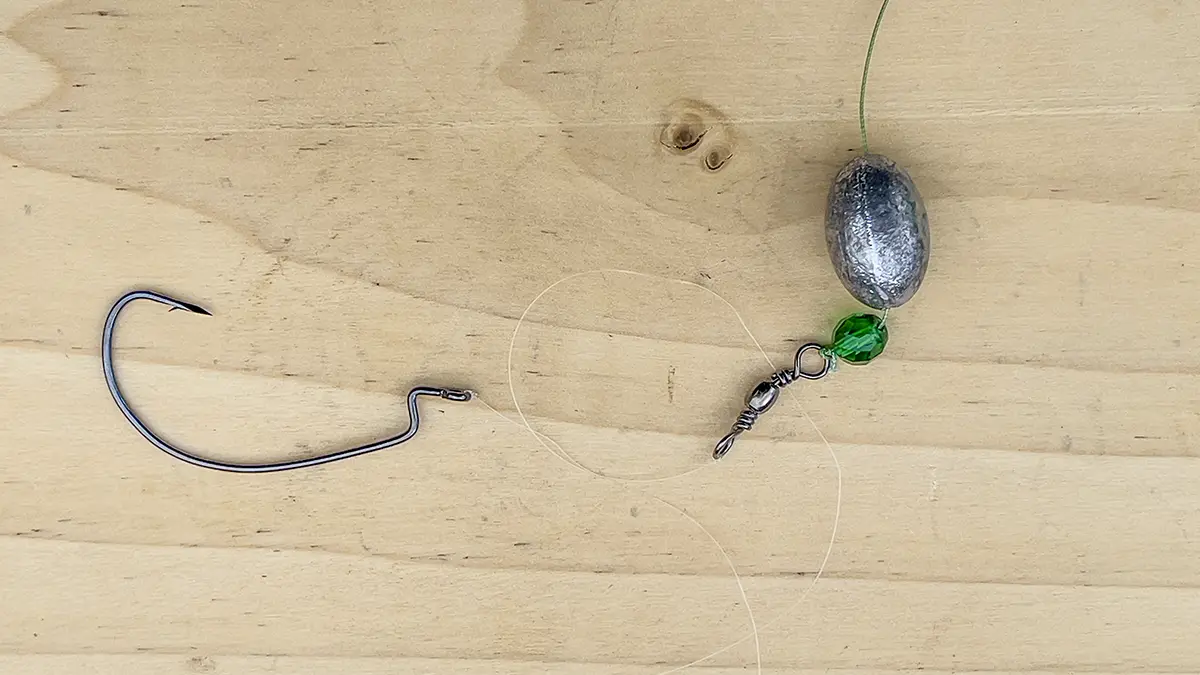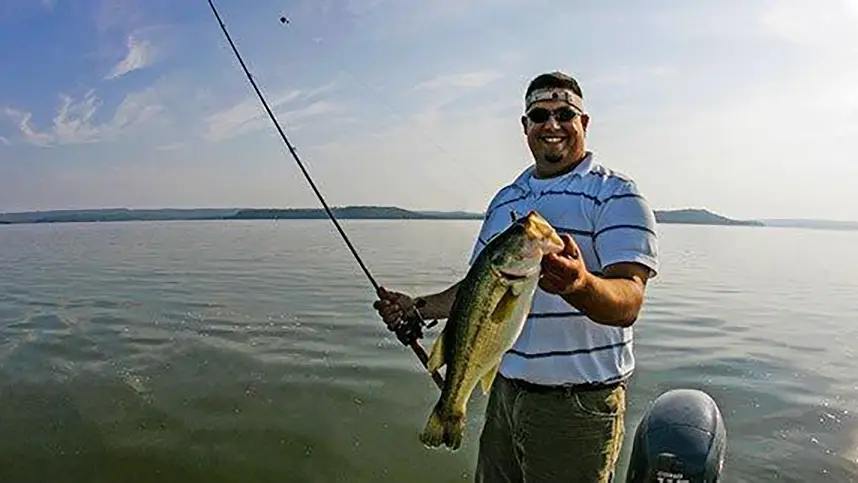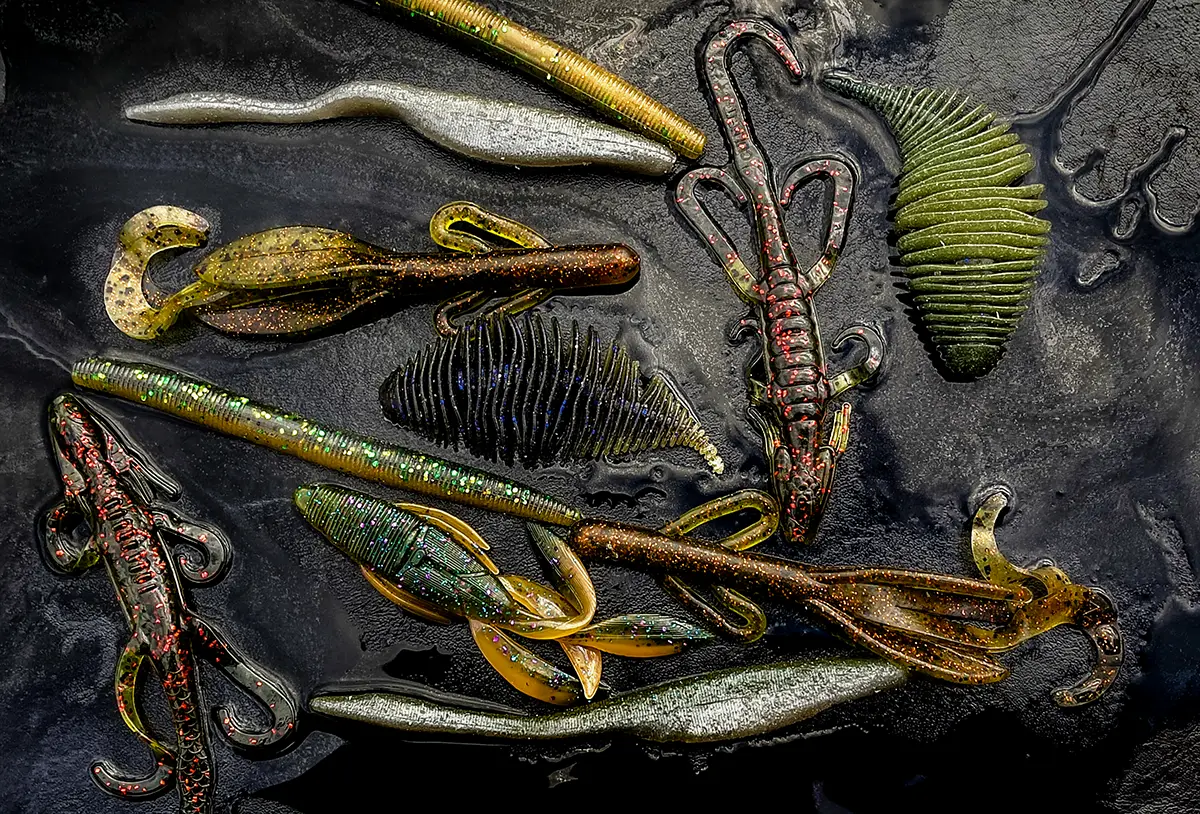Certain rigs present lures more effectively for the situation. When you’re trying to get your bait into or under a tangled mess of cover, a Texas Rig works great. When you’re targeting fish in deep clear water, a drop shot rig works wonders. And when you need to cover a lot of water in the spring and summer, a Carolina Rig can be your best bet.
What is a Carolina Rig
So we wanted to go through the best ways to rig and fish a Carolina rig as well as some of the other nuances of this longtime fish catching, and pre-side scan school finding rig that does double duty as a fish catcher and a fish finder. Essentially all a Carolina rig does is present a soft plastic lure to the fish in a more natural way than say a Texas Rig (see Carolina Rig vs Texas Rig) because the lure and hook is attached to a leader that trails behind the sliding weight that is connected via a swivel. So you drag a fairly heavy weight across the bottom and the soft plastic ducks and darts around behind it. The weight is stirring up silt and clicking and clacking along the bottom drawing attention and then the fish sees a very natural bait swimming behind it.
Before we have all this fancy electronics like side scan and forward facing sonar, we used a carolina rig to tell us if the bottom was hard or soft. If there was rock or grass. And if there was fish in an area or not. It was the ultimate bass fishing search tool since the early 1980s.
How to Get Started – Components
You basically need five things to tie up a Carolina rig and then a favorite plastic to put on it.
- Main Line: A strong, abrasion-resistant main line is a good start with a Carolina rig as you will be dragging this rig along the bottom for the most part.
- Leader Line: A short and often lighter piece of fluorocarbon or monofilament line allows the lure to disconnect from the weight and have a freedom of movement other rigs can’t duplicate.
- Weight: A bullet or egg sinker of appropriate size for the depth and the fishing conditions.
- Bead: A small plastic or magnetic bead is placed between the weight and the swivel to protect the knot from the weight and give the rig some added clicking attraction.
- Swivel: A barrel swivel is used to attach the leader line to the main line.
- Hook: A hook of appropriate size in either EWG or offset for rigging a plastic snagless is preferred.
How to Rig a Carolina Rig
To rig a Carolina rig you just need to follow this simple workflow. You can follow along in the video above or the step by step instructions below. Quick and easy.
- Slide your weight onto your main line.
- Slide your bead onto your main line.
- Tie a barrel swivel to the end of the main line.
- Tie your leader to the other end of the swivel.
- Tie your hook onto the final end of the leader.
- Thread your favorite plastic onto the offset worm hook.
How to Fish a Carolina Rig
The fishing part of a Carolina rig is not too difficult. Pick the area you want to fish and begin with a series of fan casts.
With a long rod to account for the added leader length, make a long cast and let the weight pull the rig to the bottom. You will find it easier to use a side arm lob cast with a Carolina rig as you will want the weight about 2 feet from the rod tip which means your bait could be 4 or 5 feet behind you when you cast. So lob the whole rig as far as you can. After practice you will find you can cast this rig a mile with the right rod.
Once it’s on the bottom, take up your slack and pull the rig along with your rod with a slow side sweeping action. Feeling each individual pebble on your weight. Feel for bigger rocks, stumps, grass and more. You will learn to feel the differences in your hand. If it gets wedged, simply raise your rod tip up and give it a tight pop to “jump” it over the snag. This works nine times out of ten.
Carolina Rig Fishing
A bite will feel a lot mushier than a Texas rig because they aren’t biting the weight and you are in contact with the swivel against the weight. The hook and bait are loosely following behind. Often with the Carolina rig you will feel weight when a fish bites. If you’re unsure, just hold the rig tight and feel for movement coming from the fish.
When you feel that, swing hard with a long sweeping hookset. This helps take up slack and drive a hook that is feet from the weight.
Before modern electronics, a Carolina rig was the greatest way to feel and map out the bottom without a graph. You can detect depth changes, cover, fish and more just by dragging a the rig over wide expansive flats, points, funnel areas and more.
Carolina Rig Setup / Rod
A good Carolina rig setup has a rod with a good back bone and a good length to leave you enough room to cast a weight and have a bunch of line back behind you when you cast. Something in the 7-foot, 6-inch range is the staple in Carolina-rig fishing.
I like a Carolina-rig rod to have a medium-heavy power and a Fast action. I will usually load my reel with 15-pound monofilament and a leader of 12-pound fluorocarbon. Or you can opt for 30-pound braid for the mainline and a fluorocarbon leader.
Carolina Rig Baits
Some of our favorite soft plastic baits, hands down, to Carolina rig for bass are as follows:
- Zoom Brush Hog (BUY HERE)
- Zoom Lizard (BUY HERE)
- Zoom Salty Super Fluke (BUY HERE)
- Strike King KVD OPT Supa Fry (BUY HERE)
- Z-Man Giant TRD (BUY HERE)
- Yamamoto Senko (BUY HERE)
- Geecrack Bellows Gill & Shad (BUY HERE)
A creature bait is a natural choice for a Carolina-rigged worm. Profile, lots of appendages for movement as it glides around behind the weight. But I can tell you around grass, clear water especially, straight baits work wonders. I’ve caught so many fish on Senkos and Flukes rigged on Carolina rigs. And we have found some big schools of bass on Carolina rigs in grass.
Leader and Rig Options
You can play with leader lengths just like baits. Sometimes a short leader is nice and you are in more control of the bait’s movement. Other times, like in clear water conditions for instance, a long leader can give the bait freedom of movement and draw a lot more fish. So definitely experiment with leader length when Carolina rigging for bass.
You can also buy components to make the process easier. Some companies offer all in one rigs where the weight, beads and clickers are all on a wire and you just tie one end to the mainline and the other end to the leader and go.
You can add sound to a Carolina rig. You can go light and finesse with a Carolina rig. You can also fish it in colder water than you think as most anglers think it’s just for spring and summer. So if you want to cover a lot of uncharted waters, a Carolina rig is a great search tool and even better bass catcher.
Other Questions about Carolina Rigs
- What is the best line for a Carolina Rig?
The nice thing about the Carolina rig is you don’t have to fill the spool up with a lot of expensive line. You can use affordable line for the main line and use just a fluorocarbon line on the leader. A lot of anglers use a small braid on their Carolina rig main line like 30-pound test and then just tie a 10 to 15-pound fluorocarbon leader to the swivel. - What is the best weight for a Carolina Rig?
The most popular weight for a Carolina rig is 1/2 ounce to 3/4 ounce egg sinker. There are more advanced tungsten barrel sinkers now that offer more sensitivity but they cost a lot more and break the glass beads protecting your not. You have to go to a magnetic bead if you use a tungsten weight. I like a lead 3/4 ounce egg sinker most of the time. The heavier weight keeps me in contact with the bottom. The egg shape is easy to pop over an obstruction on the bottom. - What size swivel is best on a Carolina Rig?
A little bit larger size is preferred because it acts as a buffer between your weight and the leader. Tiny little swivels can get stuck in the weight or in the bead. I like a size No. 10 up to a No. 6.


